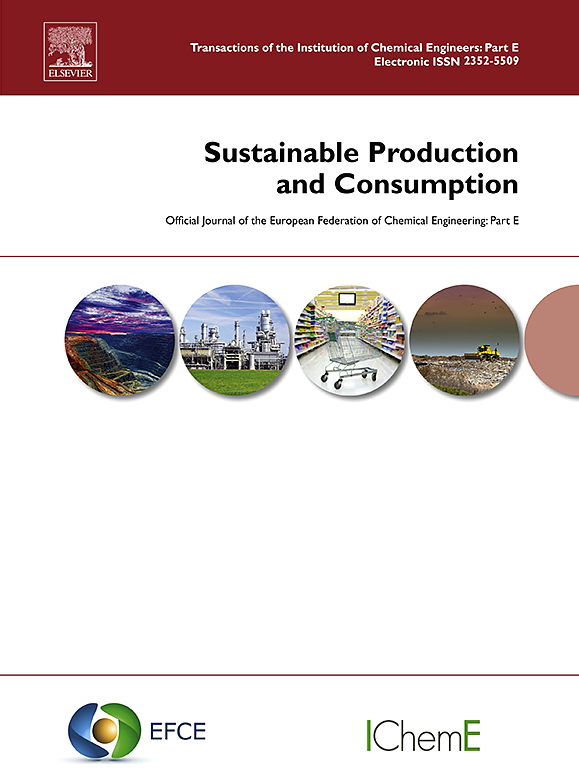Effects of the long-term rice expansion on ecosystem carbon budget in the typical agricultural area of Northeast China
IF 10.9
1区 环境科学与生态学
Q1 ENVIRONMENTAL STUDIES
引用次数: 0
Abstract
Extensive rice expansion in northeast China has significantly altered land use and land cover (LULC) changes. However, the impact of long-term rice expansion on regional carbon budget dynamics remains unclear. A major obstacle in addressing this gap is the absence of agricultural LULC information with high spatiotemporal resolution. Here, we selected the Sanjiang Plain experienced dramatic rice expansion as the study area, presenting a framework that integrates high-resolution crop distribution data with a process-based model to quantify the impact of rice expansion on regional carbon budgets. Specifically, we employed a robust deep-learning network for crop mapping based on Landsat data, to reconstruct the spatiotemporal dynamics of rice expansion from 1985 to 2020. We then incorporated these long-term crop maps into the Denitrification-Decomposition (DNDC) model, to explore the effects of rice expansion on the regional carbon budget over this period. Analysis results showed that the rice planting area expanded by 708.64 km2/yr, resulting in more than a tenfold increase over the past 36 years. Spatially, rice planting expanded from the southwest to the northeast and from the interior to the exterior. This expansion has resulted in approximately 275 Mt. of CO2 and 6.92 Mt. of CH4 greenhouse gas emissions, altering the dynamics of the regional carbon budget and shifting the ecosystem from a carbon sink to a carbon source since 2016. Although the long-term expansion of rice increased soil respiration and CH4 emissions, it also enhanced soil carbon sequestration through agricultural management practices. These findings greatly enhance our understanding of the ecosystem carbon cycle's response to long-term agricultural LULC changes, providing more accurate data support and scientific evidence for developing low-carbon agricultural policies.
长期种植水稻对东北典型农业区生态系统碳收支的影响
东北地区水稻的大面积种植改变了土地利用和土地覆被的变化。然而,长期稻米扩张对区域碳收支动态的影响尚不清楚。解决这一差距的一个主要障碍是缺乏具有高时空分辨率的农业LULC信息。本研究选择三江平原水稻扩张显著的地区作为研究区域,提出了一个将高分辨率作物分布数据与基于过程的模型相结合的框架,以量化水稻扩张对区域碳收支的影响。具体而言,我们采用基于Landsat数据的鲁棒深度学习网络进行作物制图,重建了1985 - 2020年水稻扩展的时空动态。然后,我们将这些长期作物图纳入反硝化分解(DNDC)模型,以探索水稻扩张对这一时期区域碳收支的影响。分析结果表明,水稻种植面积增加了708.64 km2/年,36年来增加了10倍以上。在空间上,水稻种植由西南向东北、由内向外扩展。自2016年以来,这一扩张导致约2.75亿吨二氧化碳和6.92亿吨甲烷温室气体排放,改变了区域碳收支动态,并将生态系统从碳汇转变为碳源。虽然水稻的长期扩张增加了土壤呼吸和CH4的排放,但它也通过农业管理措施增强了土壤碳固存。这些发现极大地增强了我们对生态系统碳循环对长期农业LULC变化的响应的认识,为制定低碳农业政策提供了更准确的数据支持和科学依据。
本文章由计算机程序翻译,如有差异,请以英文原文为准。
求助全文
约1分钟内获得全文
求助全文
来源期刊

Sustainable Production and Consumption
Environmental Science-Environmental Engineering
CiteScore
17.40
自引率
7.40%
发文量
389
审稿时长
13 days
期刊介绍:
Sustainable production and consumption refers to the production and utilization of goods and services in a way that benefits society, is economically viable, and has minimal environmental impact throughout its entire lifespan. Our journal is dedicated to publishing top-notch interdisciplinary research and practical studies in this emerging field. We take a distinctive approach by examining the interplay between technology, consumption patterns, and policy to identify sustainable solutions for both production and consumption systems.
 求助内容:
求助内容: 应助结果提醒方式:
应助结果提醒方式:


